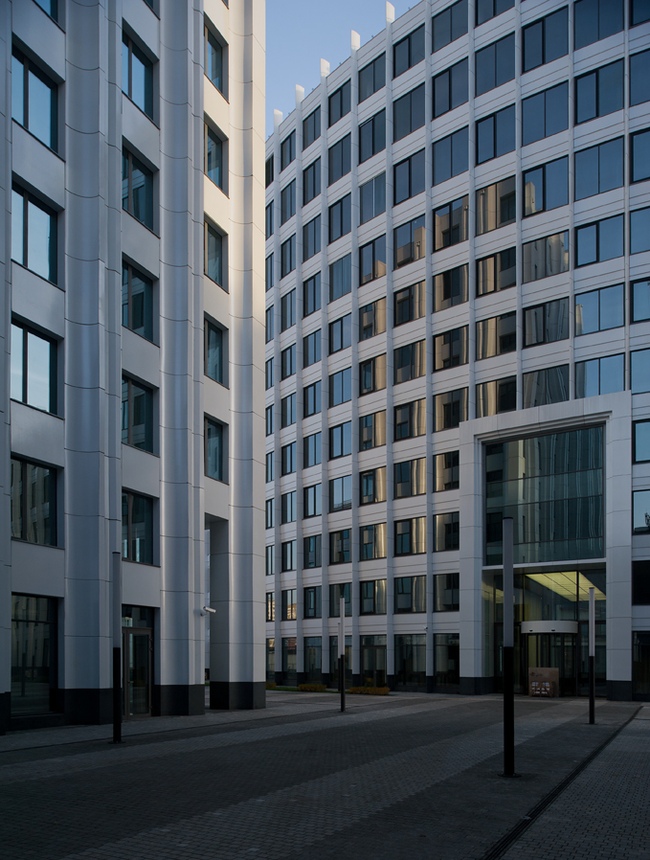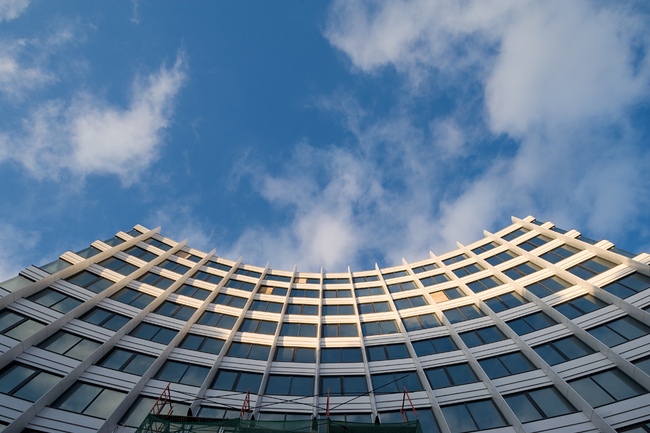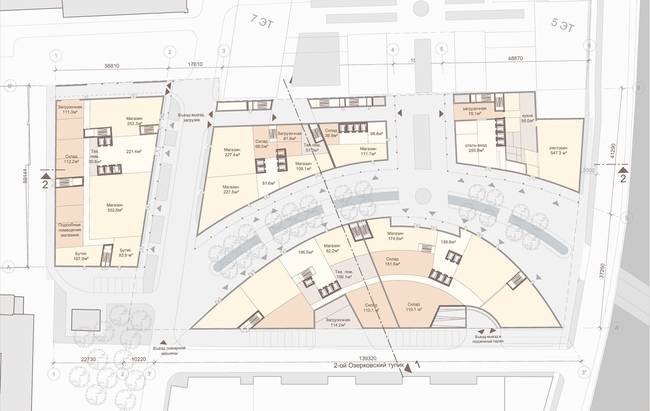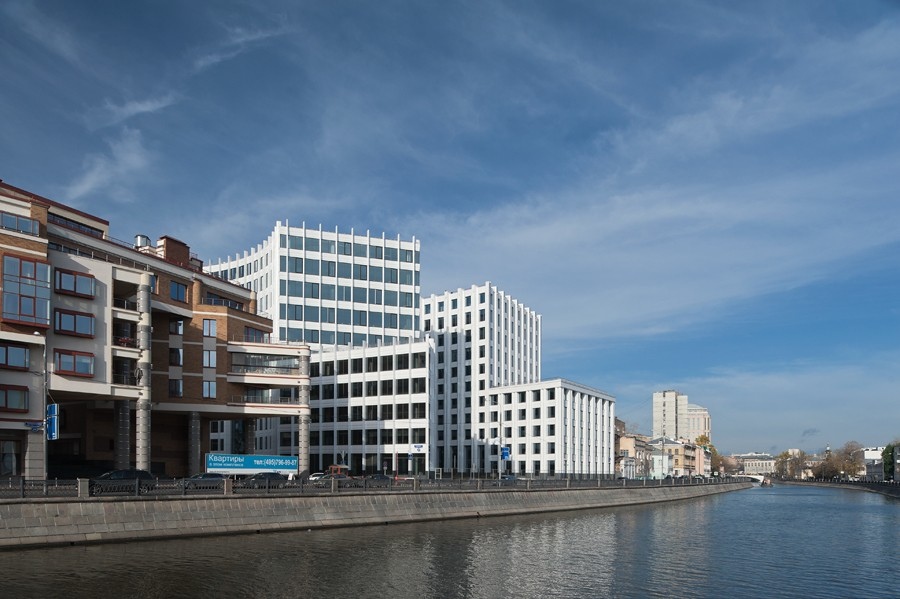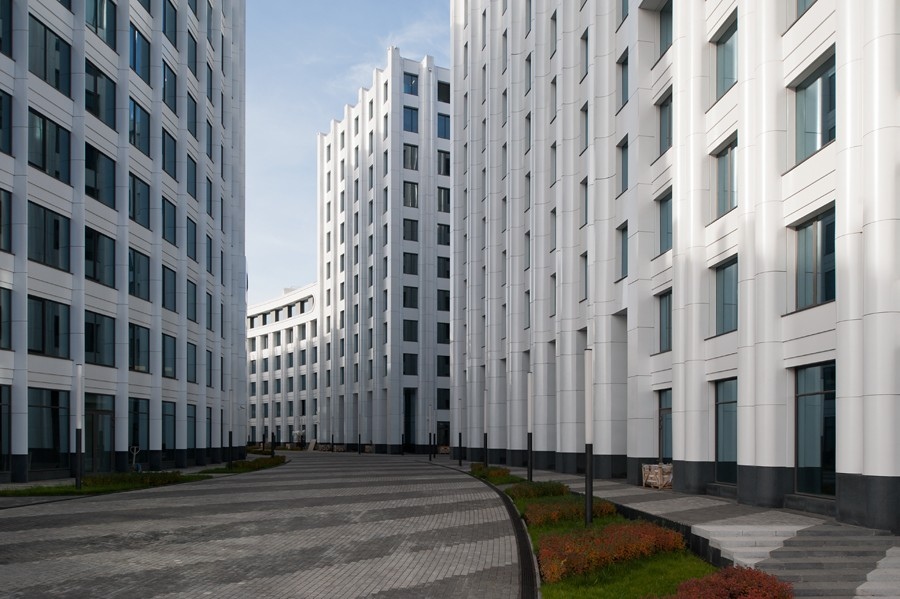Initially, for the construction of the complex consisting of a few
buildings with offices and apartments, there were allotted two neighboring land
sites stretched perpendicular to Ozerkovskaya embankment. Appreciating the
magnitude of the future construction and its location in the capital's very
center, the architects set before them a task not to limit themselves to
designing an ordinary mixed-use complex but come up with a new typological unit
- "an embankment complex" - that
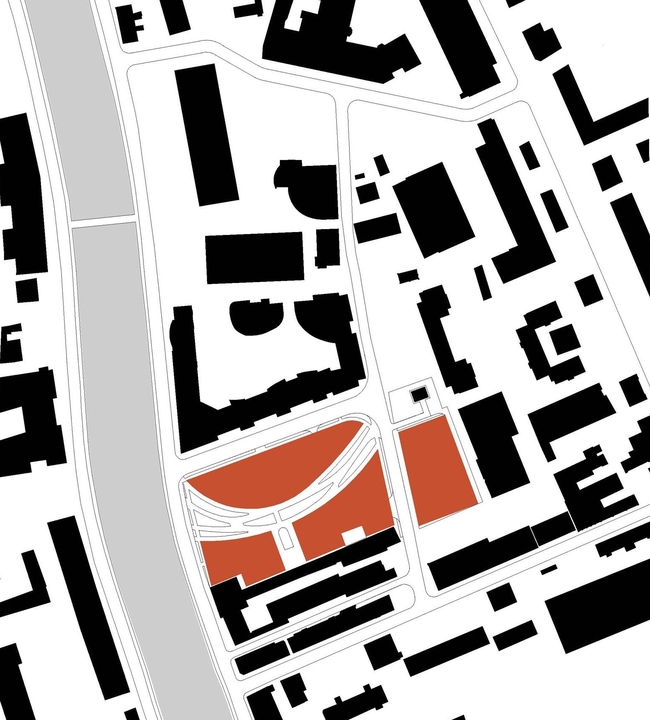
Ultimately, the construction of the complex was done on the territory
with an area of

The fist floors facing the new street are given to shops, cafes, and
restaurants, and are open to the general public. The planning project specially
provides for making small premises here - under
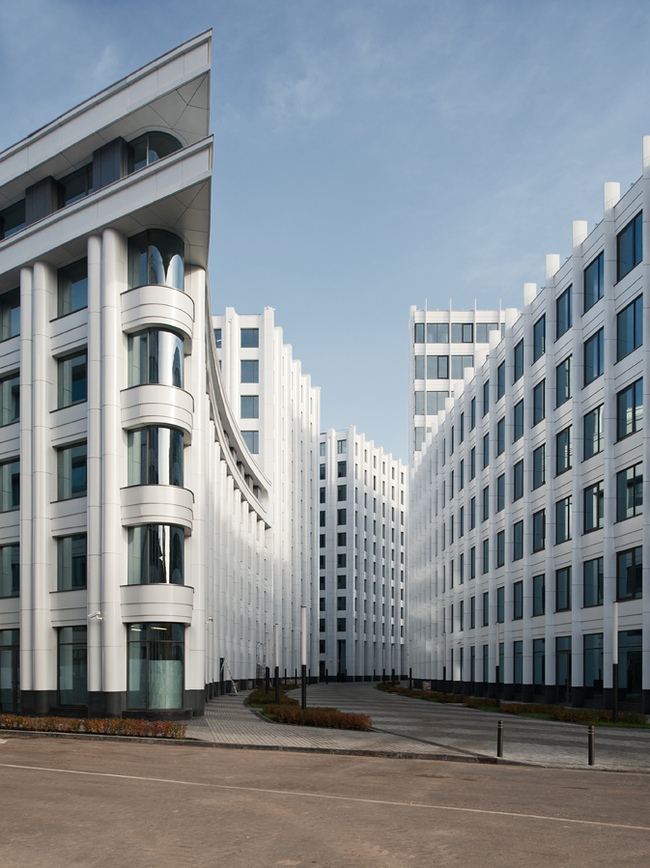
Three "Aquamarine" buildings are occupied by offices, and the
fourth (and the smallest) one is given away for apartments. Different in sizes
and shapes, the buildings are nevertheless configured similar from the
architectural standpoint - on top of the glass dressing of the facade, a
snow-white grid is placed, whose horizontals are the intermediate floors, and
whose verticals are doubled semi-columns that could remind us of Ivan Fomin
"proletarian classics" - but then again, the authors admit to drawing
inspiration from his architecture. However, while in the 1930's the concrete
columns, devoid of their capitals would stretch up for floors on end, now they
have become part of metal casing of the buildings, rather than the concrete
one. Particularly striking are the rounded corners where the glistening bent
glass, framed with the verticals of double moldings, is crowned with the sharp
triangles of the cornice slabs. The active verticals enrich the plastics, set
the rhythm and make the perspective of the boulevard more dramatic.
It is only the largest, fourth, building, whose faced plastics is a
little bit different: with semi-columns the building would have looked too
massive, so the architects came up with a different type of verticals for it,
these being the ribs coming out of the surface of the faced and reminding of
the exploits of the post-war modernism. This solution is justified from the
constructional standpoint as well: this building has curtain walls while in all
the other buildings the walls are of the monolith type. The main entrance is
accentuated by an imposing glass portal, through which one can see the lobby
with an atrium and the "court of honor" turned to the residential
house; above the windows of the first floor, there are glass transom windows in
which billboards and other advertising units will be placed.
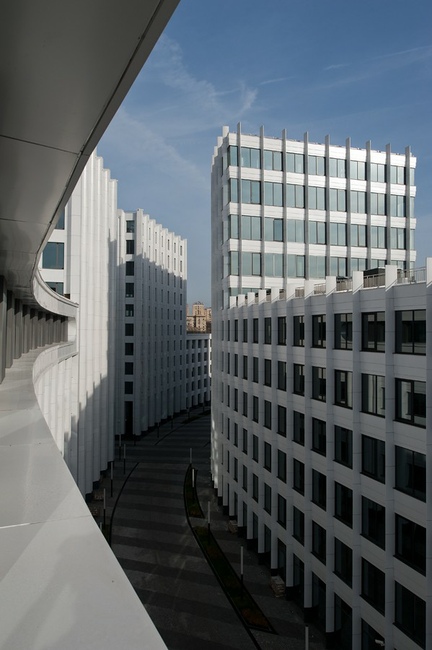
The architects were very careful in selecting the materials for the
facades: opting out of trying to imitate the stone surface in composite
material, they looked for metal that would really look exactly like metal. The
white color is meant to enhance the glitter and the lightness, as well as make
the new complex contrast to the surrounding houses and stand out against the
background of stucco and brick facades that prevail at the embankment. It was
also just as important the optimum combination of metallic glitter to keep the
building, as Sergey Choban put it, from "looking like a refrigerator".
This purpose was ideally served by the composite panels Goldstar, lightweight,
and beautifully glittering with subtle shades of color. The architects were
choosing the glass just as carefully. At last they settled on the transparent
glass with a gray tint. The rigorous rhythm of the verticals is especially
prominent against its "mirror" background.
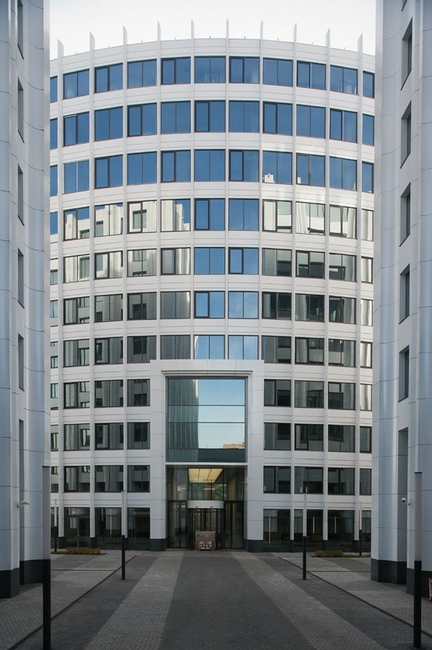
The authors themselves jokingly call their creation "a full-scale
model", and this definition explains both the apparent lightness of the
complex and its ostentatious independence from its architectural context.
Snow-white and modern, "Aquamarine" has not only become a
self-sufficient piece of city architecture but also went a long way to organize
its surroundings.
